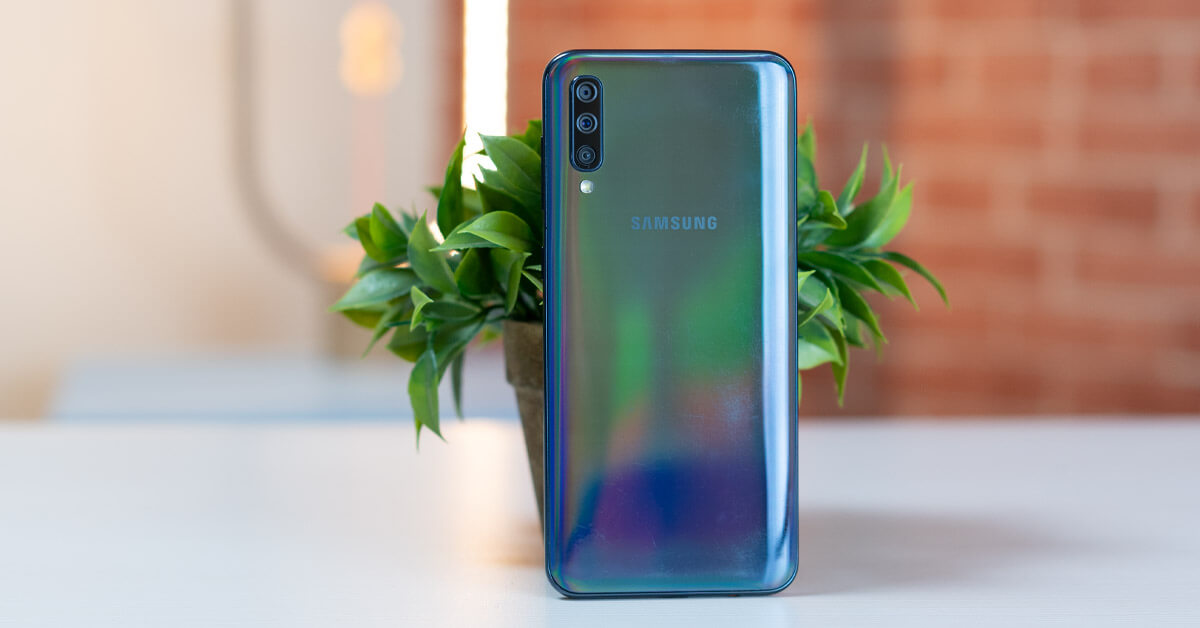
In 2019, Samsung flooded the entry-level and mid-range segment with a number of phones. Although the latest Samsung smartphones are too hard to keep track of, I was particularly intrigued with the Samsung Galaxy A50. Since it’s the least expensive smartphone in Nepal with triple rear cameras and an in-display fingerprint sensor, I was really eager to test how the device really fares on real-life use. And so, this is my Samsung Galaxy A50 review after two weeks of use.
Samsung Galaxy A50 Specifications:
- Display: 6.4-inch Super AMOLED display
- Resolution: Full-HD+ (2340×1080 pixels); 19.5:9 aspect ratio @ 403PPI
- Chipset: Exynos 9610 Octa
- CPU: Octa-core (4×2.3 GHz Cortex-A73 & 4×1.6 GHz Cortex-A53)
- GPU: Mali-G71 MP3
- RAM: 4GB
- Storage: 64GB; Expandable up to 512GB (Dedicated SD Card Slot)
- OS & UI: Android 9.0 (Pie) with Samsung’s OneUI on the top
- Rear Camera: Triple camera – (25 MP, f/1.7, PDAF) + (8 MP, f/2.2, 12mm, (ultrawide)) + (5 MP, f/2.2, depth sensor), LED flash
- Front Camera: 25MP, f/2.0
- Sensors: Fingerprint (under display), Gyro, accelerometer, proximity, compass
- Battery: 4000mAh with 15watt fast charging support; USB Type-C port
- Colors: Blue, White, Coral, and Black
- Price:
Rs. 33,490Rs. 26,699
Design
Let’s start the things with its design. Most of the midrange Samsung smartphones released in 2018 had a bland and outdated design, which looked like they were brought straight from 2015. But in the Galaxy A50, it’s a whole different story. The handset comes with a Glasstic back and a plastic frame. Apparently, Glasstic is the combination of Glass and Plastic molded together. With such kind of setup, the back feels as premium as glass yet weighs light as plastic. I really want to appreciate the trick Samsung used here to maintain the ergonomics.

The device is very comfortable to hold, despite having a big battery and its curvy edges aids in the grip. The shimmering rainbow effect on the back is also a unique touch here, and looks absolutely appealing!
Although the Glasstic back has its own perks, it is also a proficient fingerprint magnet. And it’s really annoying. Plus the urge to clean the smudges is also quite a pain in the neck.
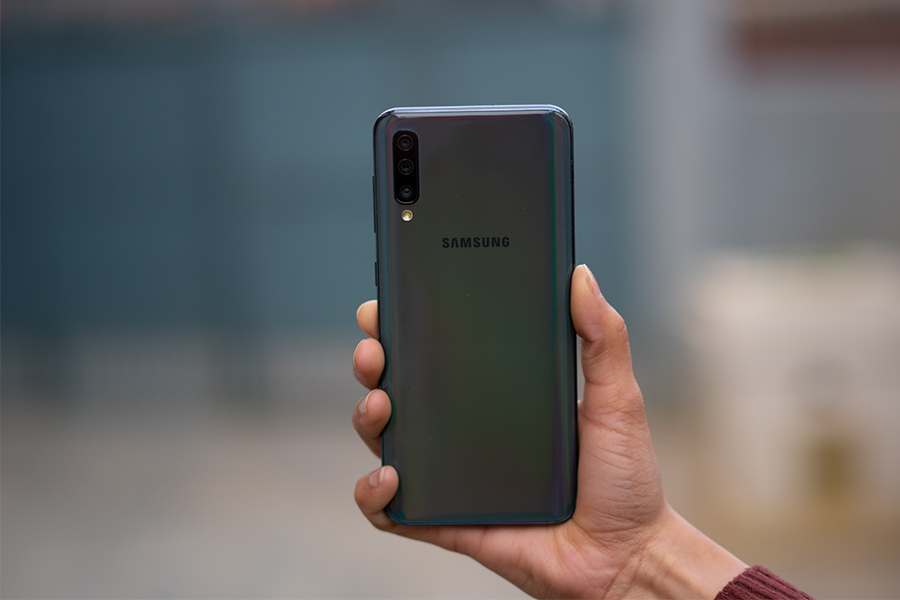
Having a plastic frame and a Glasstic body, I am concerned about the durability of the handset in the long run. But I did not notice any creaks and bends on my use. However, there were some minor scratches at the back. To avoid that, you can put on a silicone case. And since it comes inside the box, you don’t have to spend extra bucks for the protection.
Display
On the display front, the phone gets a 6.4-inch Super AMOLED panel. When I reviewed the Galaxy M10 and M20, I was missing the deeper blacks and brighter whites of the AMOLED screen. And it’s finally back in the A50. The contrast ratio is not the only thing to be excited here. The tall and immersive display also deserves a fair bit of praise. It comes with a small notch on the top, which Samsung likes to call an “Infinity-U display”. The tiny notch in this device is less obtrusive so I didn’t have any issues at all. I would have preferred a smaller chin here. But since it’s a midrange phone, this is not something I can fuss about.
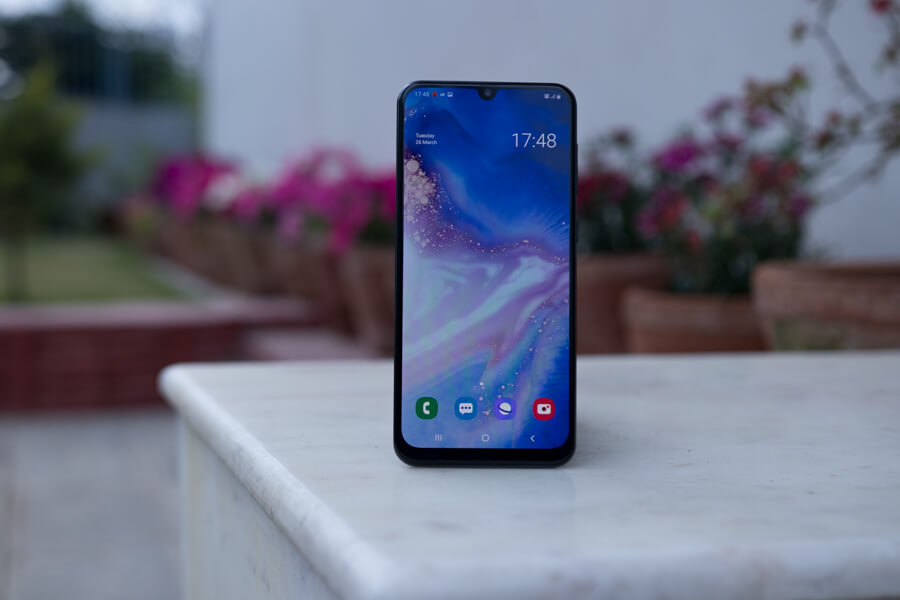
In an attempt to shrink down the bezels, Samsung also gave away the LED notification light. But it has an always-on display feature as the replacement. Since this feature displays all sorts of notifications, current time and date even on an off-screen, I find it more useful. However, it consumes more power than an LED indicator. So, you will have to sacrifice a fair amount of battery juice for this feature.

With Full-HD+ resolution at its disposal, the contents on the screen look really sharp. Color accuracy is also amazing and the viewing angle is decent in a similar fashion. There is also an in-display fingerprint sensor on the device. But I will get into that later.
Camera
Moving on to the camera side, a triple camera setup resides on the back. The rear camera setup comprises of a 25MP primary shooter backed by an 8MP ultra-wide-angle lens and a 5MP depth sensor. The setup looks quite familiar with last year’s Galaxy A7 2018. But unlike the last year’s model, I found the camera on the Galaxy A50 to be slightly better. The colors are slightly more accurate than last year’s model as well. And the dynamic range is also quite appreciable here. However, details were not as crisp as the images from other smartphones available at a similar price.

I also noticed that the resolution of the image to be around 12 Megapixels. Since Samsung has not spoken anything about the pixel binning or any sort of pixel merging technology, I couldn’t understand what’s going on here. But if you want to capture the high-res 25MP images, you can toggle the aspect ratio in the camera UI to “3:4H”. But when I do so, I didn’t notice any changes in the image quality and sharpness.
Talking about the ultra-wide-angle lens, I found it to be quite good. Although the images don’t pack plenty of details, the color accuracy was really good. I, actually, found it to be much better than the primary shooter. Just look at the images shown below. The red t-shirt of my friend looks oversaturated from the primary camera whereas the color looks natural in the ultra-wide-angle image.
The depth sensor, as the name implies, pulls in the depth information, and comes into action while capturing the portrait images. The portrait images look better than what we saw on the Galaxy M10 and M20. But edge detection is still not perfect. I noticed improper edge detection on multiple occasions, which Samsung needs to improve in its upcoming phones.
As far as the front camera is concerned, a 25MP selfie shooter handles the job while taking selfies and video calls. In terms of images, the 25MP selfie camera here also captures 12-megapixel photos by default, just like the primary rear camera. But you can toggle the aspect ratio to “3:4H” to get high-res 25MP shots.
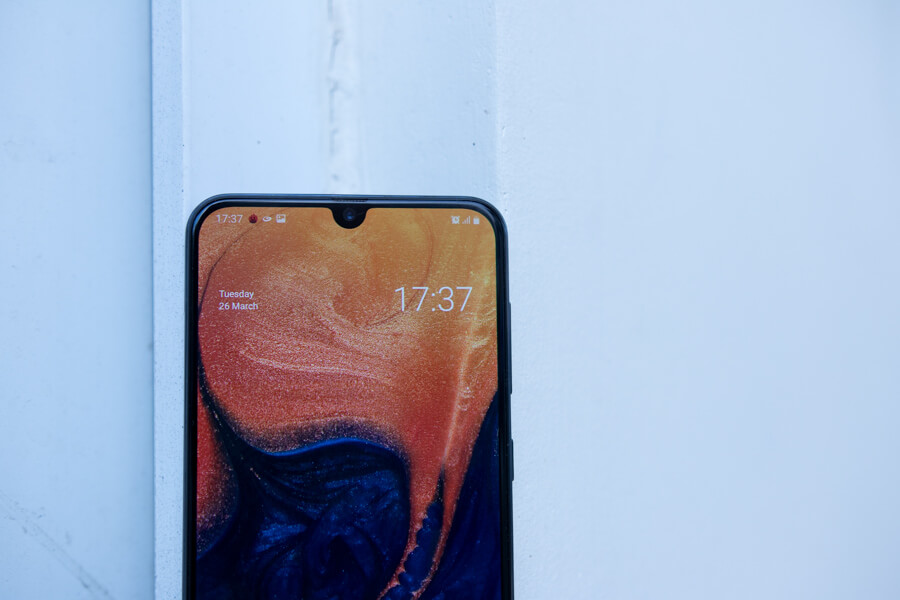
Ignoring the resolution, I am pretty impressed with the selfies. The colors in the selfies look natural and match my taste. But while capturing portrait selfies, the software over-smoothens the skin, due to which, it looks unnatural at times. The edge detection is also not particularly impressive.
When it comes to videos, the phone can capture up to Full-HD videos, both from the 25MP main camera and 8MP ultra-wide-angle camera. Although the videos look decent from both the lenses, I liked the colors from ultra-wide-angle one. Since more part of the subject remains in the frame, the subject always seems to be the focus. However, the Autofocus from the primary camera is laggy and takes time while capturing videos. So, the videos can look jittery because of it. But in terms of stabilization, I found the primary shooter doing a better job. And there is EIS (Electronic Image Stabilization) to handle that duty.
Apart from the normal video recording, the Galaxy A50 also comes with Slow Motion, Super Slo-Mo, and Hyperlapse features. With the Super Slo-Mo feature, you can capture some moments at 240 frames per second. This is quite a premium feature for a midrange phone.
For high-res images, Click here.
Performance
In the midrange segment, Samsung mostly lags on the performance side. But things have been a bit different lately. The smartphone comes with Exynos 9610 chipset, aided by 4GB of RAM. The 10nm chipset is the first to show up on any Samsung smartphone. The Octa-core CPU here uses four Cortex A-73 performance cores and four Cortex A-53 power-efficient cores. Although this setup looks similar to the Kirin 710 and Helio P70 chipsets, the Exynos 9610 outperforms both of them when it comes to the real-life use. Just look at these benchmark scores. The Exynos 9610 chip on the Galaxy A50 has a better score than the Vivo V15 and the Honor 8X in AnTuTu, 3D Mark, and GeekBench’s test. So I would have to say that the choice of the chipset is really appreciable here.
| Vivo V15 (MediaTek Helio P70) | Realme 2 Pro (4/64GB)
(Snapdragon 660) |
Samsung Galaxy A50 (Exynos 9610) | |
| AnTuTu v7 | 143452 | 128703 | 146360 |
| GeekBench 4.3.2 (Single Core) | 1542 | 1468 | 1719 |
| GeekBench 4.3.2 (Multi-Core) | 5751 | 5506 | 5554 |
| 3D Mark (OpenGL ES 3.1) | 1268 | 1229 | 1303 |
| 3D Mark (Vulkan) | 1252 | 1184 | 1394 |
| PC Mark (Work 2.0) | 8147 | 5778 | 5576 |
| Android Bench (Seq. Read Speed) | 307.87 MB/s | 291.18 MB/s | 502.23 MB/s |
| Android Bench (Seq. Write Speed) | 175.7 MB/s | 173.76 MB/s | 189.92 MB/s |
Let’s skip the geeky things and talk about how the device really fared on my day to day use. On my use, light apps and games ran without any issues. And multitasking and switching between apps were fairly smooth. The phone did not sigh even while playing the high-end games. I played graphics-intensive games like PUBG and Shadowgun Legends and both of them ran without any issues. PUBG stuttered sometimes while playing on high settings but I don’t know for sure if it was my internet or the phone. So I have to say that, the phone performed well on my tests. But Asphalt 9 was incompatible with this device, which I am not pleased about. Other than that, I have to nothing to complain about.
The device comes with 64GB of onboard memory, which is quite sufficient for my kind of usage. But even in the case of insufficiency, users can use the SD card. Samsung has provided a dedicated slot for the SD card, so users don’t have to eject the second SIM card out to expand the memory.
Software & UI
Talking about the software, the phone runs on the latest Android Pie out of the box. Samsung also gives its own touch on the software, adding One UI version 1.1 on top. And unlike Touchwiz and Experience UI, the One UI is really optimized. There is less bloatware and most of them can be uninstalled or disabled easily. Although the UI looks polished, some apps have cartoonish icons, which do not look good at all.
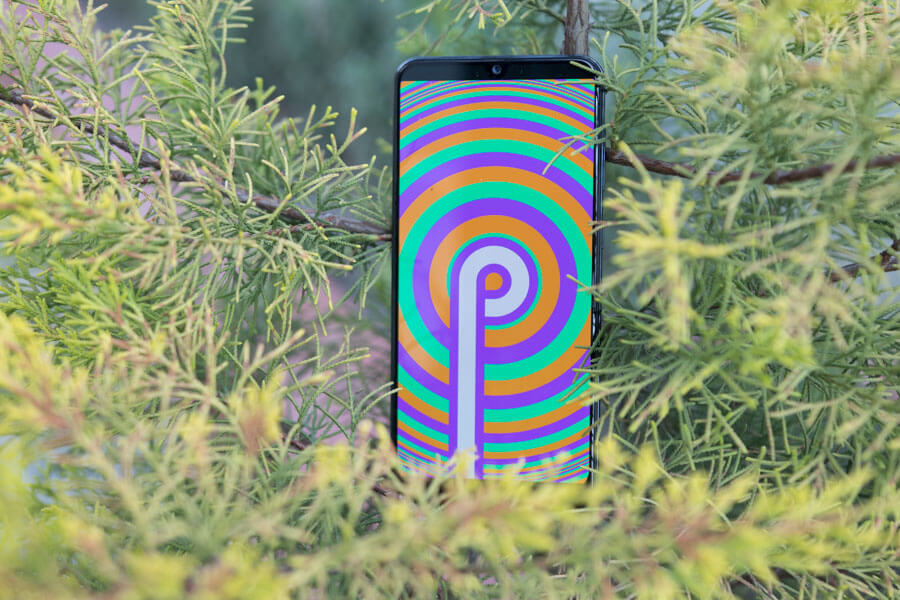
Keeping the things of the icons and bloatware aside, I genuinely liked how Samsung has focused on the User Experience in this new UI. The UI is easy to use. Navigating through the setting can be performed even with a single hand. That could be one of the reasons why the UI was named as One UI. Apart from that, Samsung has also enriched the phone with plenty of features. Among the bunch, I liked the Bluelight filter and Night Mode option very much.
Since these features prevent you from eye-stress, I recommend using these features to our followers. Plus turning on the Night mode also saves the battery juice since the Super AMOLED display does not consume power at all when the pixels are black.
Oh, I almost forgot. If you prefer gestures over the on-screen navigation buttons, there is an option to toggle that option as well.
Security
On the security side, the phone comes with Face Unlock and fingerprint sensor apart from the usual security stuff. And as I mentioned earlier, the fingerprint sensor in this device rests under the display. And it is the least expensive phone with that fancy feature. But unlike the Galaxy S10 and S10 Plus, the fingerprint sensor on this device is an optical one and not an ultrasonic one.
Although unlocking the device by tapping on the screen looks cool, the fingerprint sensor is rather slow on the Galaxy A50. It takes over second to unlock the device, which is quite frustrating. During my review period, I received an update on the fingerprint sensor. I expected a boost in the unlocking speed after the update. But I barely noticed any changes after the update. I found the Face Unlock feature to be much faster. So I had to rely on the Face Unlock feature most of the time. However, it’s not all that accurate.
Audio
On the audio front, the phone comes with a single bottom-firing speaker. And the sound output from this device is fairly loud. The speaker on the device also outputs a decent amount of mids and treble. When it comes to bass, it’s very subtle and not noticeable at times. The audio output started getting shrill at higher volumes. So, I just felt the audio output of the speaker to be okay at best.

But listening to music via headphones is a different story. The phone comes with a Dolby Atmos option, with which you can get better separation between the left and the right channels. With the Dolby Atmos mode turned on, I also noticed a boost in the audio volume. In addition to that, the Dolby Atmos feature also adds quite a depth in the music. So, I really enjoyed listening to songs via headphones in the Galaxy A50.
Battery
Moving on to the battery, a massive 4000mAh battery acts as a powerhouse in this device. With a big battery at its disposal, the phone also provides an amazing battery backup. On my normal day of use, the phone lasted for more than a day. At the end of the day, I always found the battery level to be 30% or more. So I must honestly praise the power efficient Super AMOLED display and Samsung’s optimizations on the software front to extend the battery life. If you are unsatisfied with the battery life, you can turn on the Power Mode and Ultra Power Saving Mode to prolong the backup to some extent.
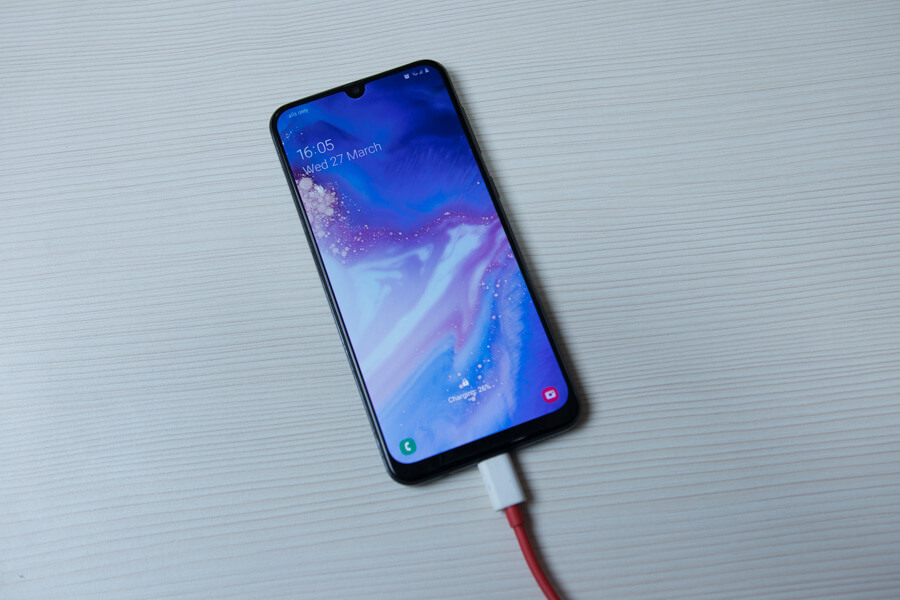
When it comes to charging, you can refuel the device with a 15-watt charging. Although a 15-watt charger is not the fastest at this price range, it is commendable to see Samsung’s generosity in the midrange segment. Because even the flagship Galaxy phones also come with the same wattage of the charger. The phone took exactly one hour and 48 minutes on my charging test, which I consider decent.
Verdict
The Samsung Galaxy A50 is a good phone at this price and ticks lot of right boxes. Vibrant Super AMOLED display, long-lasting battery, optimized UI, and capable chipset are rare features at this price. Although the in-display fingerprint sensor is more or less of a gimmick, it is still a fancy feature to have on a phone. With these nifty features, the Galaxy A50 is surely one of the best midrange phones in Nepal at the moment. And since the Redmi Note 7 Pro is confirmed not to land in Nepal and the Vivo V15 is slightly on the expensive side, the Galaxy A50 would be the phone to consider under Rs. 35,000 price segment.












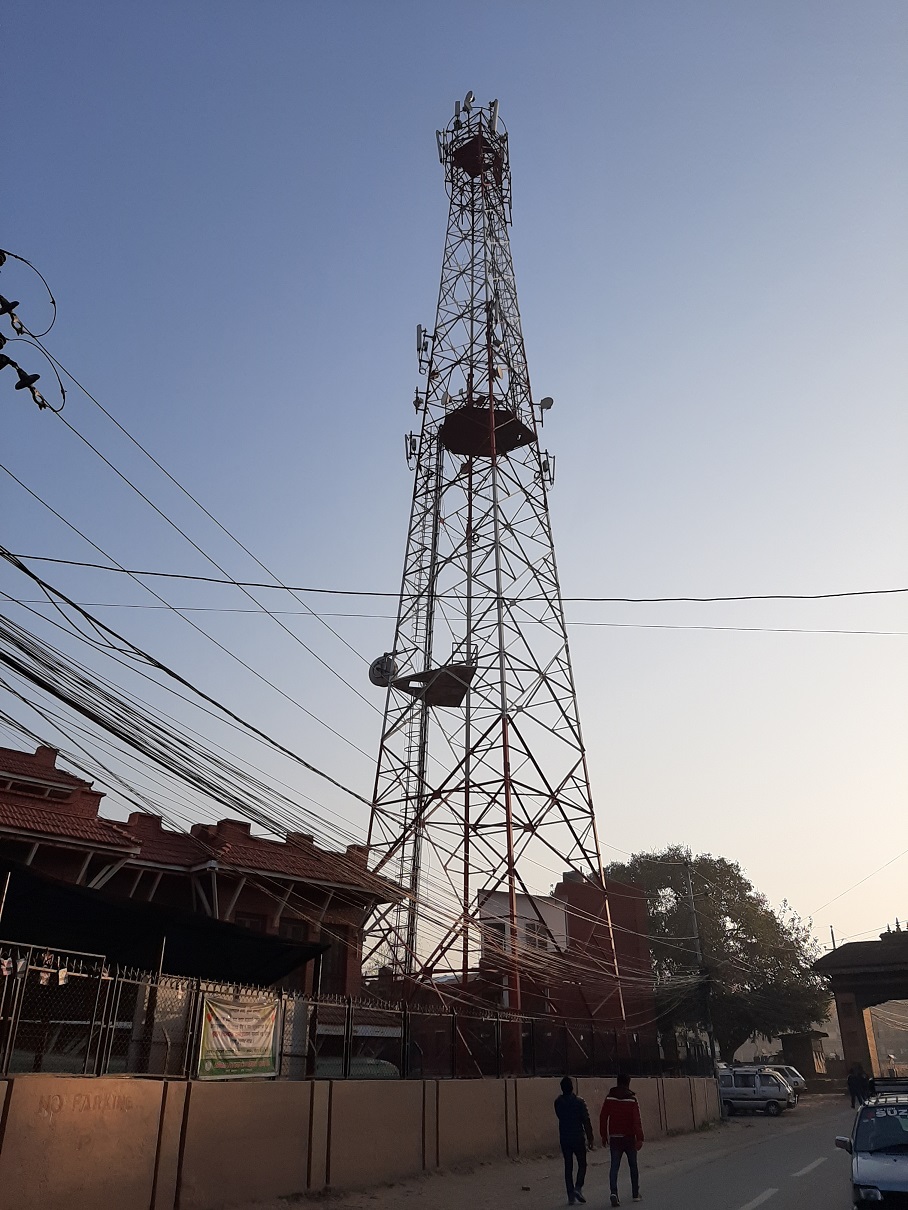

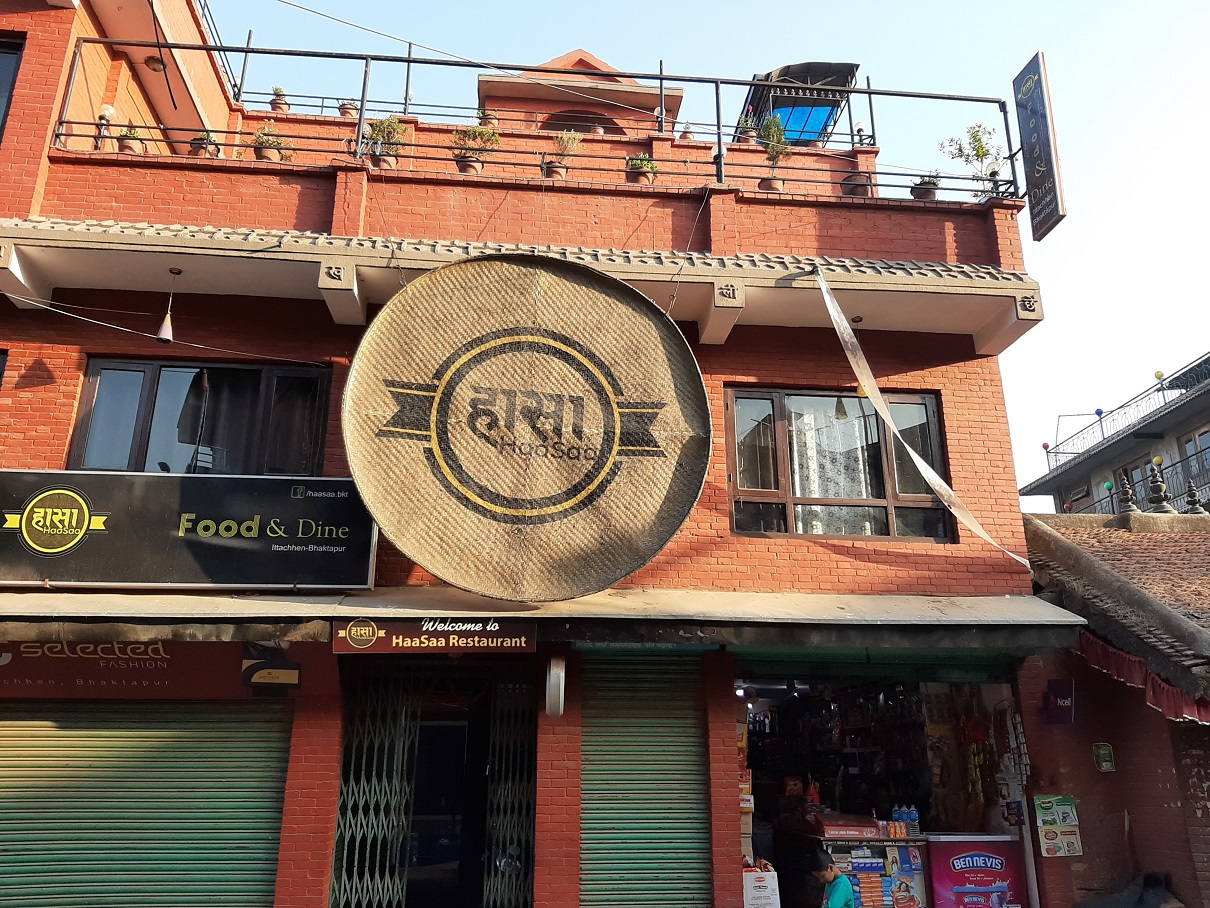






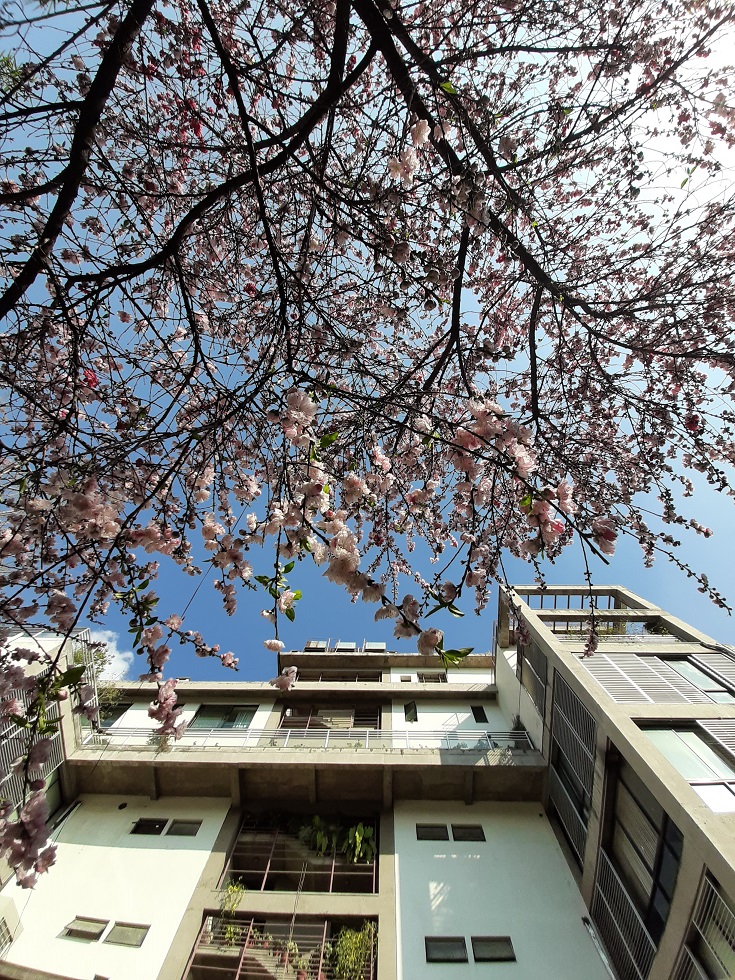




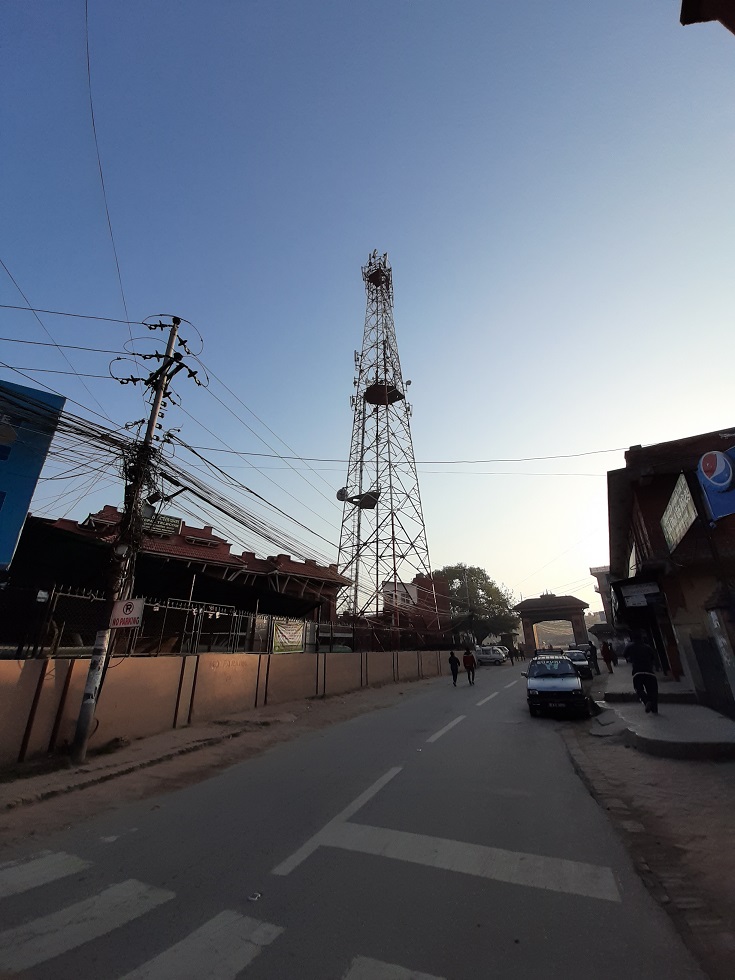











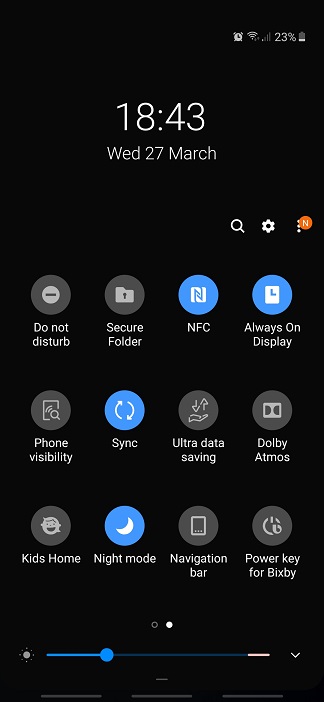







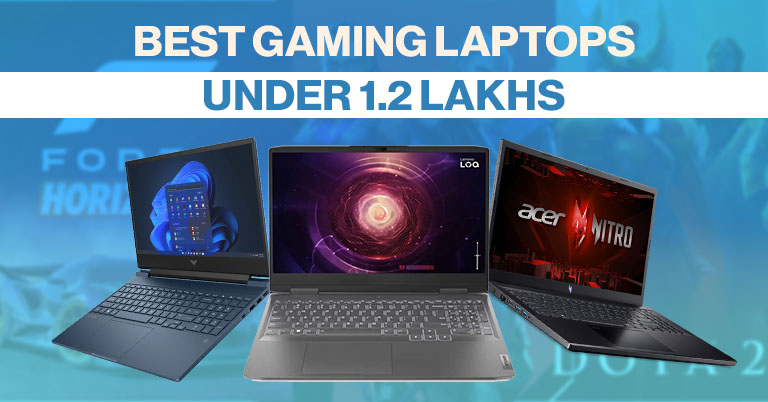

![Best Mobile Phones Under Rs. 15,000 in Nepal [Updated] Best Phones Under 15000 in Nepal 2024 Budget Smartphones Cheap Affordable](https://cdn.gadgetbytenepal.com/wp-content/uploads/2024/03/Best-Phones-Under-15000-in-Nepal-2024.jpg)
![Best Mobile Phones Under Rs. 20,000 in Nepal [Updated] Best Mobile Phones Under NPR 20000 in Nepal 2023 Updated Samsung Xiaomi Redmi POCO Realme Narzo Benco](https://cdn.gadgetbytenepal.com/wp-content/uploads/2024/01/Best-Phones-Under-20000-in-Nepal-2024.jpg)
![Best Mobile Phones Under Rs. 30,000 in Nepal [Updated]](https://cdn.gadgetbytenepal.com/wp-content/uploads/2023/12/Best-Phones-Under-30000-in-Nepal-2024.jpg)
![Best Mobile Phones Under Rs. 40,000 in Nepal [Updated] Best Phones Under 40000 in Nepal 2024 Smartphones Mobile Midrange](https://cdn.gadgetbytenepal.com/wp-content/uploads/2024/02/Best-Phones-Under-40000-in-Nepal-2024.jpg)
![Best Mobile Phones Under Rs. 50,000 in Nepal [Updated] Best Phones Under 50000 in Nepal 2024 Smartphones Midrange](https://cdn.gadgetbytenepal.com/wp-content/uploads/2024/02/Best-Phones-Under-50000-in-Nepal-2024.jpg)
![Best Flagship Smartphones To Buy In Nepal [Updated] Best Smartphones in Nepal 2024 Flagship Premium Samsung Apple iPhone Xiaomi OnePlus Honor](https://cdn.gadgetbytenepal.com/wp-content/uploads/2023/09/Best-Smartphones-in-Nepal-2024.jpg)